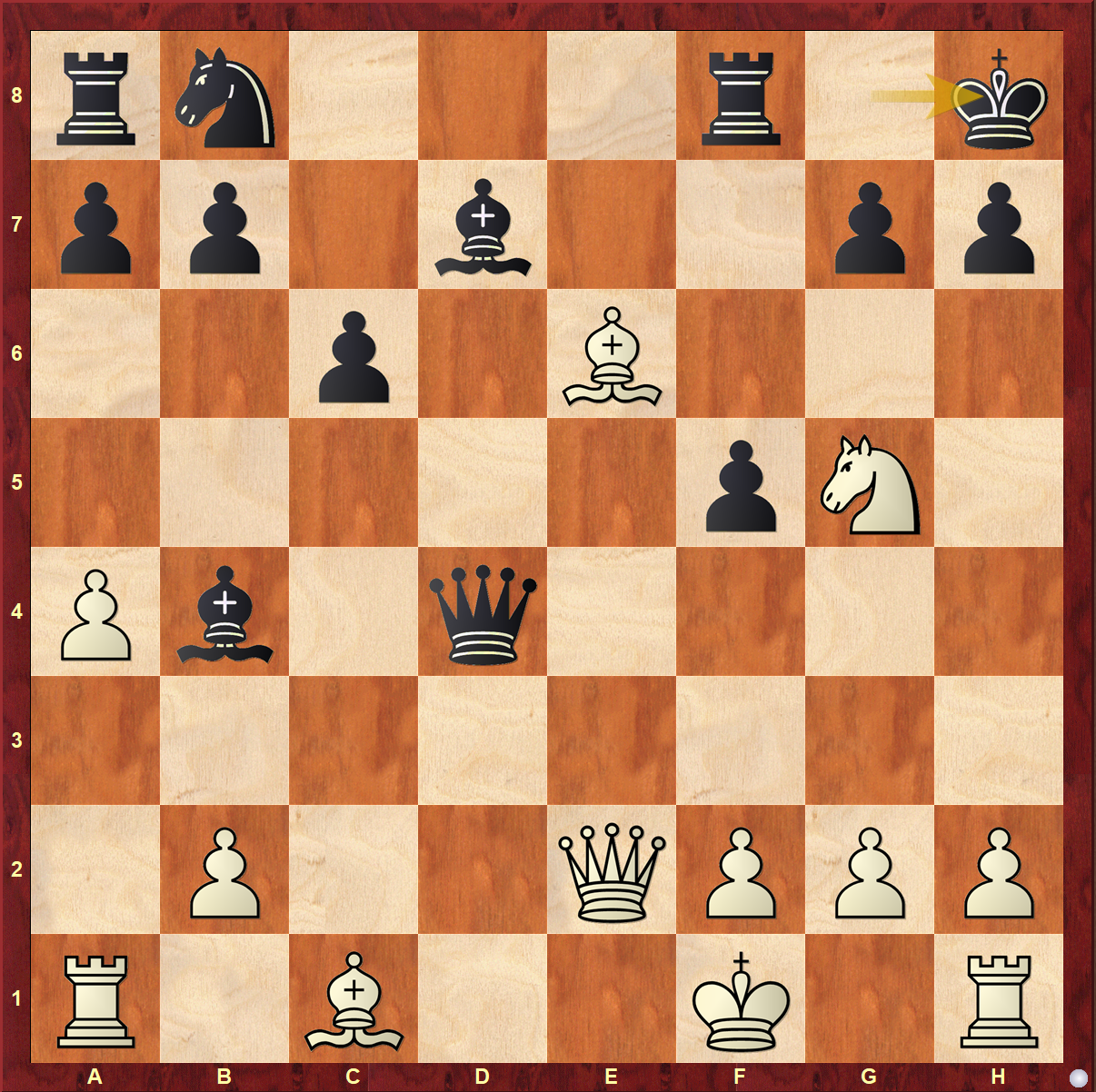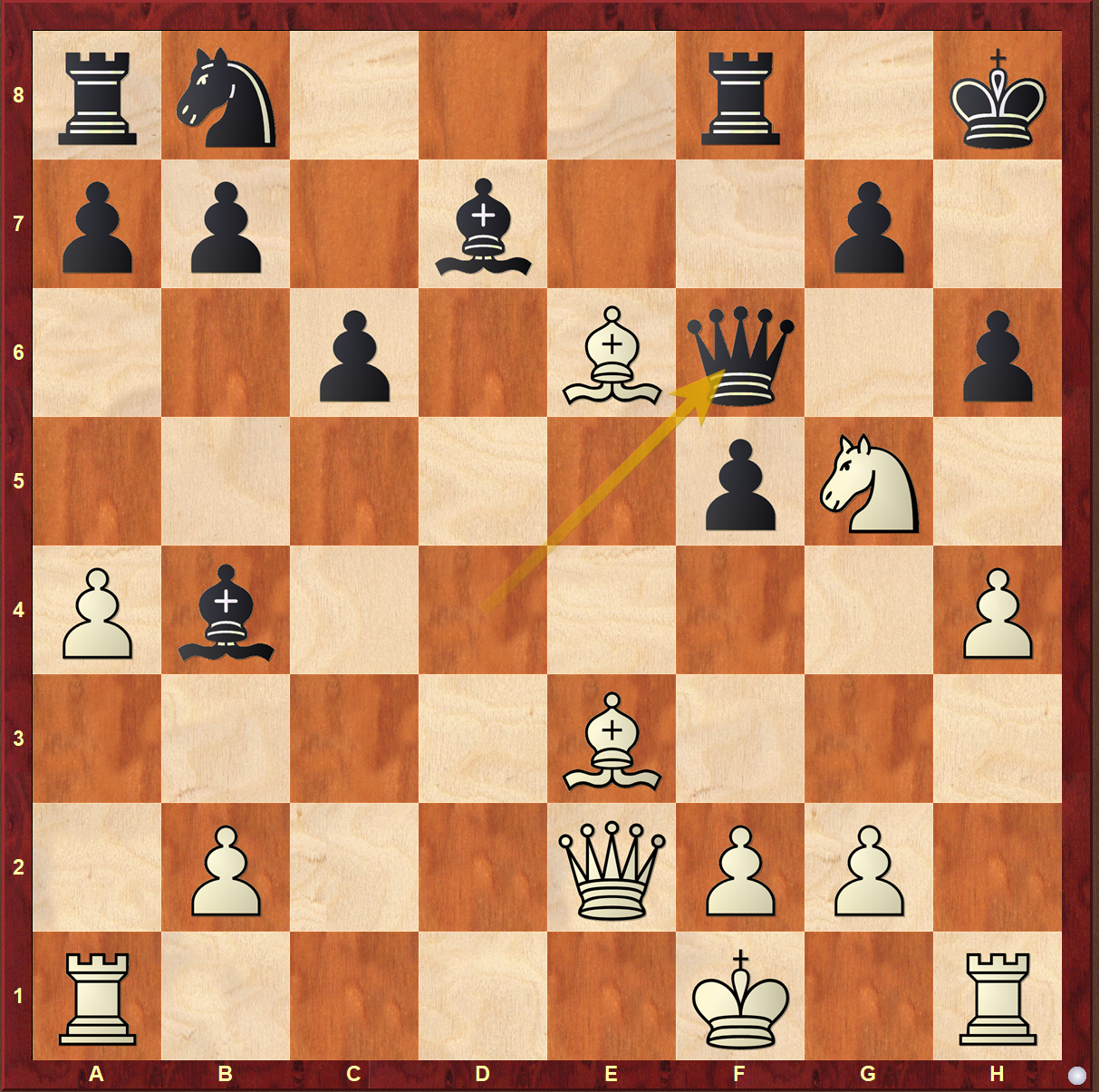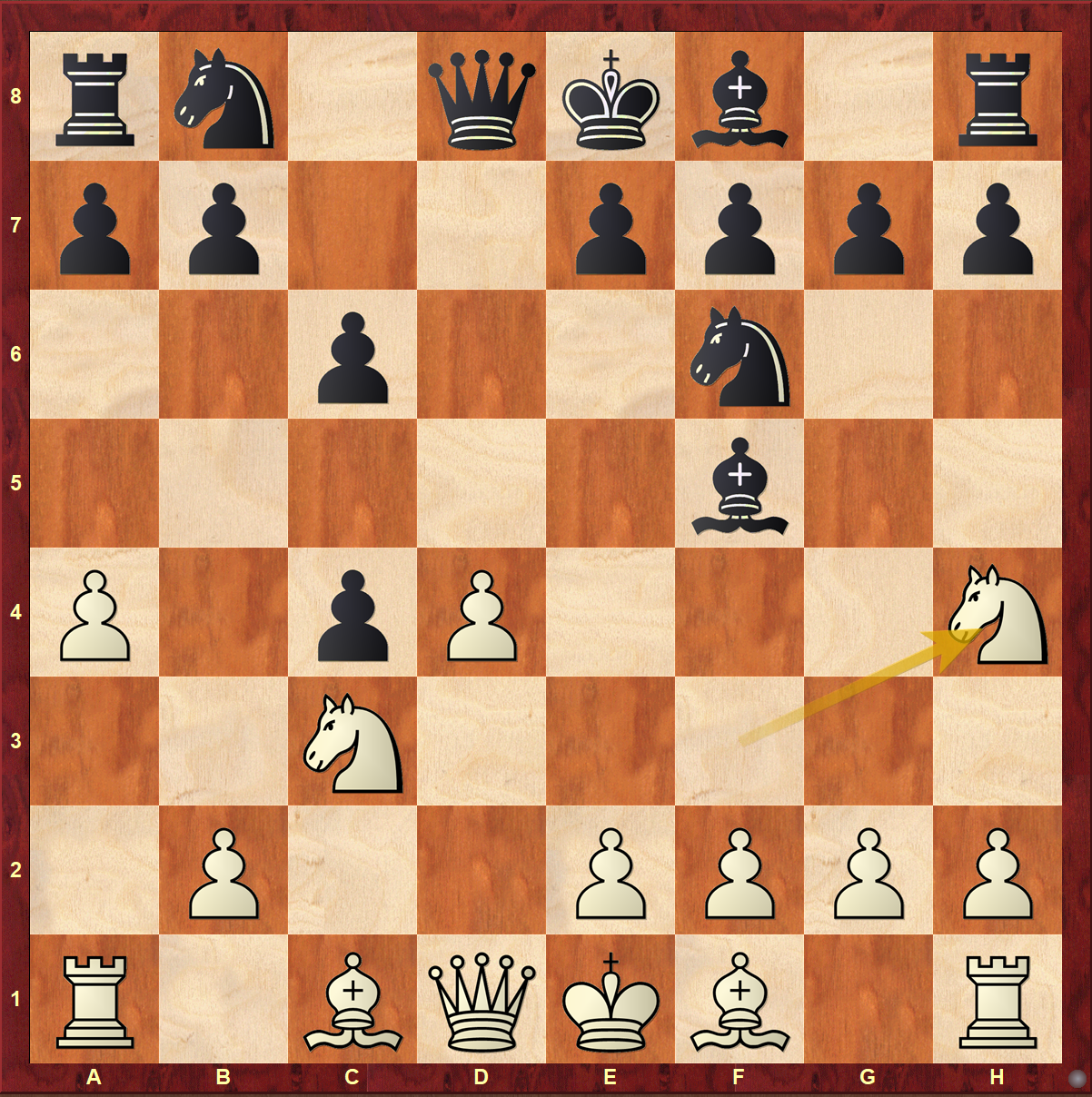Every day, we are faced with hundreds of decisions that could change the course of our future. For most of us, fortunately, the majority of these decisions are not life-changing. However, consider if you were the leader of an organization in which many of the decisions you make could potentially be critical for your company.
For example, imagine when one of the founders of Yahoo!, David Filo, was approached in 1998 by two students offering to sell him their search-engine prototype. If someone had warned him that this would be a critical decision for his company, would he have ever advised them to strike out on their own, eventually creating Google?
As the saying goes, chess is a model of life. What happened to David Filo may happen to chess players every time they play. They have limited time and cannot afford to think deeply about every move, so the best thing they can do is try to recognize which positions are critical and spend most of their time working through these.
Understanding critical positions is one of the top skills that strong chess players have, similar to strong decision-makers in life. Fortunately, training on this ability in chess is much easier than in the less predictable circumstances of real life!
Critical position: Where one decision may significantly alter the outcome of the game.
You might be wondering how to recognize a critical position in a game. It is not practical to explain this concept in a short blog post; however, I've found that the easiest way to improve upon this skill is by solving as many puzzles with critical positions as possible. Eventually, you will begin to recognize patterns and spend more time in those positions. Hopefully, you will not only be able to recognize these critical positions, but also find the best ways to work through them!
From now on, before reading our game analysis, you will have an opportunity to solve critical positions and compare your reasoning with what actually happened in the game.
Game of the Week
While everyone’s eyes were still on the Tata Steel Chess festival, a great opening preparation with an astonishing execution happened this week at the Lozovatsky Memorial tournament held in Chelyabinsk, Russia.
The Game of the Week is: Andrei Zhigalko vs. Viachaslau Zarubitski
Critical Position 1- White to move (very hard)

Critical Position 2- White to move (hard)


(76) Zhigalko,Andrey (2527) - Zarubitski,Viachaslau (2448) [D17]
Lozovatsky Memorial-A 2021 (8.10), 21.01.2021
[Durarbayli,Vasif]
1.d4 [Zhigalko usually plays 1.e4, but for this game he had something different in mind...]
1...d5 2.c4 c6 3.Nf3 Nf6 4.Nc3 dxc4 5.a4 Bf5 6.Nh4 Bd7 [This is the sharpest possible line against the opponent's choice.If a chess grandmaster plays something he has never done before you have to be very careful! Obviously, Zhigalko prepared something against the line that Zarubitski played before. Nevertheless, Zarubitski accepted the challenge and paid the price.]
[6...Bc8 The bishop does not cover the d file, so e5 is possible against 7.e4 and I would recommend that you analyze this line if you are going to play with Black. 7.e4 (7.e3 Bg4 This move is the safest continuation. 8.Be2 Bxe2 9.Qxe2 e6 10.Qxc4 Be7 11.0–0 0–0 12.Nf3 c5 13.dxc5 Qc8 14.e4 Qxc5 15.Qxc5 Bxc5 16.e5= 0–1 (59) Navara,D (2705)-Giri,A (2732) Warsaw 2013) 7...e5! 8.Bxc4 (8.Nf3 exd4 9.Qxd4 Qxd4 10.Nxd4 Bc5) 8...exd4 9.e5 dxc3! This may look like a queen sacrifice,but it is temporary because of the bishop b4 discovery attack. 10.Bxf7+ Kxf7 11.Qxd8 cxb2 12.Qc7+ Ke6 13.Qxc8+ Nbd7 14.Qxb7 bxa1Q 15.Qxc6+ Kf7 16.e6+ Kg8 17.0–0 Qe5 18.Qxa8 Qxe6 ½–½ (42) Larsen,B-Teschner,R Wageningen 1957]
7.e4! [7.g3 Zarubitski's previous opponent did not play the principal line and the game was drawn after some complications. 7...e6 8.Bg2 ½–½ (33) Gasanov,E (2481)-Zarubitski,V (2451) Moscow 2019 8...c5!? 9.Bxb7 (9.d5?! exd5 10.Nxd5 Nc6 11.0–0 (11.Qc2?! Nxd5 12.Bxd5 Nb4 13.Qe4+ Be7 14.Bxc4 0–0 15.Nf5 Bxf5 16.Qxf5 Qd4 17.Bd3 Nxd3+ 18.Qxd3 Qb4+ 19.Kf1 Black is better developed and White's weak pawn structure gives Black bright future. 0–1 (32) Nyback,T (2545)-Ivanchuk,V (2716) Antalya 2004) 11...Nxd5 12.Bxd5 Be7 13.Nf3 Bf6 14.Bxc4 0–0= ½–½ (22) Harika,D (2391)-Tairova,E (2271) Heraklion 2004) 9...Bc6 10.Bxa8 Bxa8 11.d5 exd5 12.0–0 d4 13.Nb5 Nc6 Black's whitesquare bishop and strong center compensate the material deficit. 1–0 (70) Taylor,M (2336)-Anderson,J (2205) Margate 2012]
7...e6 8.Bxc4 Nxe4 9.Nxe4 Qxh4 10.Qf3 Bb4+ 11.Kf1 f5?

[11...h6 This seems like the only way to equality, but Black does it with only moves. 12.Bf4 0–0 13.Be5 f5 Only move. White was threatening Knight f6 with a strong attack. 14.Ng3 Kh7 15.Nh5 c5! Only move. It is extremely hard move for humans to see the sequence. No wonder this move was only made in the correspondent chess. (15...Rg8? 16.Nf4 Qe7 17.g4! Black does not have any counter-play and White will eventually reach the king.) 16.Qxb7 (16.Bxg7 Nc6! 17.Qh3 (17.Bxf8 Rxf8 18.Nf4 Nxd4 19.Qxb7 Rf7 20.Qb8 Qf6 The position is double-edged. Black's pieces' activity compensates the exchange.) 17...Qxh3! (17...Qg5? 18.Rg1! Prepares f4 and then g4. 18...Rf7 19.f4 Qg6 20.g4 Rxg7 21.Kf2! Be8 (21...Rgg8 22.gxf5 Qxf5 23.Bd3+–) 22.Be2! Defends h5 before taking f5 22...Kh8 23.gxf5 Qxf5 24.Qxf5 exf5 25.Nxg7 Nxd4 26.Bc4+– 1–0 (75) Sisak,R (1926)-Baciak,M (2179) ICCF email 2017) 18.gxh3 Rf7 19.Rg1 Rg8 20.Nf6+ Rxf6 21.Bxf6 Rxg1+ 22.Kxg1 Kg6 23.Bh8 Kh7 24.Be5 cxd4 25.f4 ½–½ (25) Tsynarev,N-Gnedov,O (2171) ICCF email 2012 25...Nxe5 26.fxe5 Bd2= White has a bad pawn structure and cannot claim any advantage.) 16...Qe4 17.Qxe4 fxe4 18.Bxg7 Rf5! Black gives a rook for a knight and a bishop. This position will be nearly equal.½–½ (25) Balta,M (2104)-Hughes,G (2112) ICCF email 2017]
12.Ng5 Qxd4 13.Qe2! [Here comes the surprise! This move has not been seen previously in over-the-board games.]
[13.Qh5+ Zarubitski was probably expecting this move. Players usually first give a check on h5 and then place the queen on e2. The idea is to weaken the Black king, but there is a small difference: Black does not equalize neither in this line. 13...g6 (13...Kd8 14.Qe2 Re8 15.Be3 Qg4 16.Nf7+ Kc8 17.f3 Qg6 18.Bf4! (18.Ne5?! Qf6 19.f4 Bd6 1–0 (34) Iordachescu,V (2603)-Mammadzada,G (2316) Baku 2014) 18...Qxf7 19.Qe5 Kd8 20.Qc7+ Ke7 21.Qxb7) 14.Qe2 h6N (14...Na6 15.Nxe6 Qe4 16.Qxe4 fxe4 17.Bxa6 Bxe6 18.Bxb7 Rd8 19.Bxc6+ Kf7 20.Be3 1–0 (40) Hracek,Z (2631)-Michalik,P (2471) Slovakia 2011) 15.Nxe6 Bxe6 16.Qxe6+ Kd8 17.Be3 Qd6 18.Qxd6+ Bxd6 19.Bf7 Nd7 20.Bxg6 f4 Good chances for equality. Perhaps Zarubitski aimed for this position.]
13...0–0 [24 minutes. Zarubitski was playing quite fast until this point. Clearly he did not anticipate White's move.]
[13...Na6 14.Nxe6 Qe4 15.Nxg7+ Now the pawn is on g7, so White can win a pawn. 15...Kd8 16.f3 Qxe2+ 17.Kxe2+–; 13...h6 14.Nxe6 Bxe6 15.Qxe6+ Kd8 16.Be3 The difference here is that the f5 pawn will be hanging. 16...Qd6 17.Qxf5 Nd7 18.Qg4 Qe7 19.Rd1]
14.Bxe6+ Kh8 15.h4!!

[15.Be3? Qf6 16.Rd1 Bxe6 17.Bd4 Qxg5–+; 15.Qh5 h6 16.Nf7+ Rxf7 17.Bxf7 f4! Stops the black square bishop from developing. 18.Qf3 Bd6 The position is unclear because White cannot develop the bishop.]
15...h6 [15...Qf6 16.Ba2 h6 (16...Na6? 17.Nxh7!+–) 17.Bf4 Na6 18.Be5 Qg6 19.Rd1 Rad8 20.Rh3 Nc5 (20...f4 21.Qd3 Qxd3+ (21...Bf5 22.Qxd8+–) 22.Rhxd3 Nc5 23.Rd6 hxg5 24.Rh6#) 21.Rd6+–]
16.Be3 Qf6N [16...Qg4 17.Qd3 Qh5 (17...Bxe6 18.Nxe6 Rc8 19.Nf4 Na6 20.f3 Qg3 21.Rh3+– The queen is trapped.) 18.g4! Qg6 (18...Qxg4 19.Bd4! c5 (19...Bxe6 20.Nxe6 Rf7 21.Rg1 Qe4 22.Qxe4 fxe4 23.Bxg7+ Kh7 24.h5!! The idea is: rook g6 and take h6. Black cannot stop without compromising other dividends. 24...Rf5 (24...Nd7 25.Rg6 Bd2 26.Ke2 Bf4 27.Rag1 Re8 28.Nxf4 Rxf4 29.Rxh6+ Kg8 30.Be5++–) 25.Rd1 Rxh5 26.Rd8+–) 20.Bxg7+ Kxg7 21.Rg1 Qh5 22.Qd6 hxg5 23.Rxg5+ Qxg5 24.hxg5+–) 19.Qc4 f4 20.Bf7 Be6 21.Bxe6 fxe3 22.Qxb4 Na6 23.Qd4 Rxf2+ 24.Kg1 Nc7 25.Bf5 Qf6 26.Qxe3 Rxb2 27.Re1+– 1–0 (48) Schulenberg,H (2206)-Bevan,P (2091) ICCF email 2017]
17.Rd1! Bxe6 18.Bd4 [The importance of h4. Now the knight on g5 is defended.]
18...Qg6 19.Bxg7+! [19.Qxe6 Qxe6 20.Nxe6 Rf7 21.Bxg7+ Rxg7 22.Rd8+ Rg8 23.Rxg8+ Kxg8 24.Nc7 Bd6 25.Nxa8 Na6 Black still has some hopes because the knight is stucked on a8.]
19...Kxg7 20.Nxe6+ Kf6 21.Nxf8 Bxf8 22.Rd8+– [Material-wise, Black is ahead, but the weak king and undeveloped queenside make the position hopeless for Black. White just needs to make a few accurate moves, which Zhigalko did.]
22...Be7 23.Rc8 f4 [23...Qg4 24.Qd2 White should not trade the queens because Black's king is weak. 24...f4 25.Qd4+ Kf7 26.Rh8 Bf6 27.Qc4+ Ke7 28.Qb4+ Kf7 29.Qxb7+ Nd7 30.Qb3+ Ke7 31.Rxa8+–]
24.g4 [White opens up the position so that the second rook can join the attack.]
24...fxg3 25.Rh3 Nd7 [A cry from the heart. Black wants to finally activate the queenside, but it does not change anything.]
26.Rxa8 Bd6 27.fxg3 Ne5 28.Kg2 Nd3 29.Kh2 [Defends from knight f4 fork.]
29...Bc7 30.Rf8+ [Black resigned. If the game continued:]
30...Kg7 31.Qe7+ Qf7 32.Qxf7#
1–0


 https://static.report.az/photo/f3239a96-1d98-336f-b36a-502c10b2cde8.jpg
https://static.report.az/photo/f3239a96-1d98-336f-b36a-502c10b2cde8.jpg

